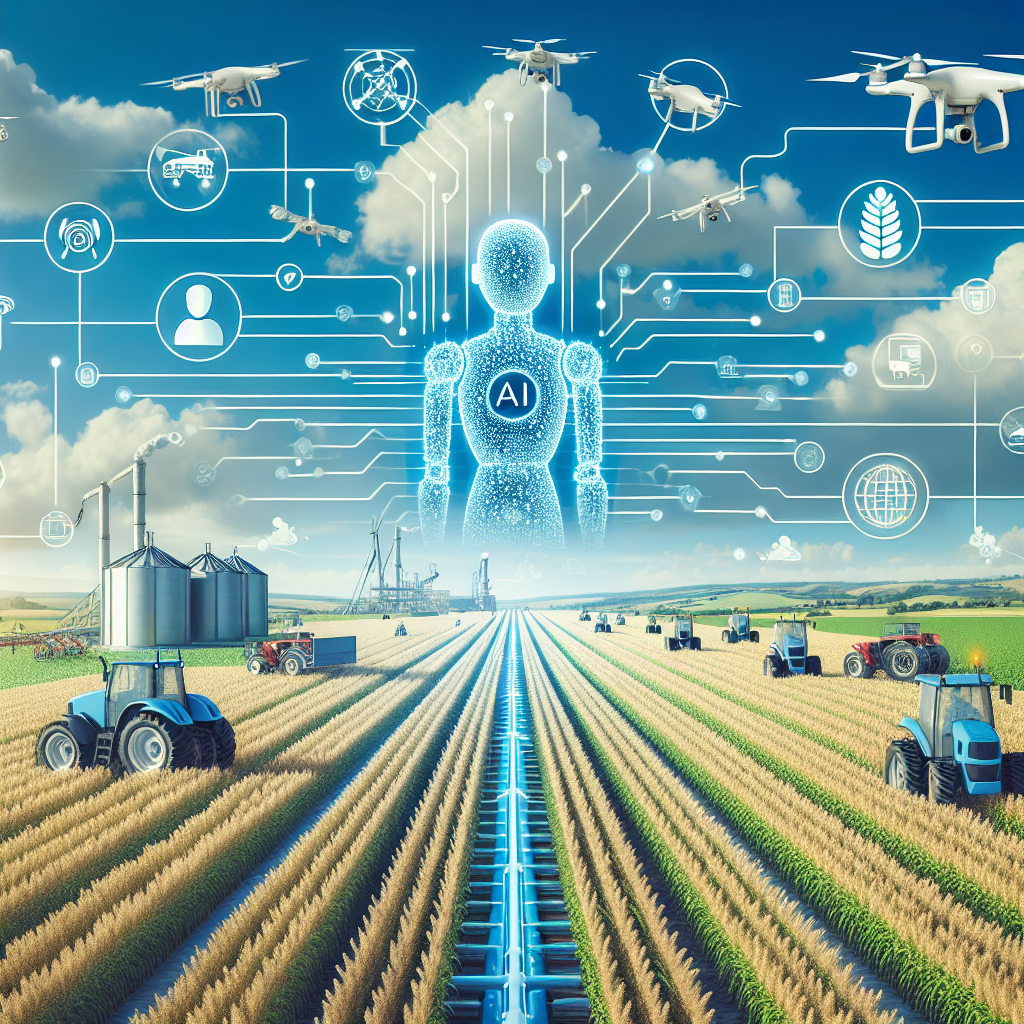Introduction
Agriculture is the backbone of the global economy, providing food and raw materials for various industries. With the world’s population expected to reach 9.7 billion by 2050, the demand for food and agricultural products is set to increase significantly. To meet this growing demand, farmers and agricultural businesses need to adopt new technologies to improve efficiency and productivity.
One such technology that holds great potential in transforming the agricultural supply chain is Artificial Intelligence (AI). AI refers to the simulation of human intelligence in machines that can analyze data, learn from it, and make decisions based on that data. In the agricultural sector, AI can be used to optimize various processes in the supply chain, from planting and harvesting to storage and distribution.
Benefits of AI in Agricultural Supply Chain Management
1. Predictive Analytics: AI can analyze historical data, weather patterns, soil conditions, and other factors to predict crop yields and optimize planting schedules. This can help farmers make informed decisions about what crops to plant, when to plant them, and how to maximize yields.
2. Precision Farming: AI-powered drones and sensors can monitor crop health, soil moisture levels, and pest infestations in real-time, allowing farmers to take timely action to prevent crop damage. This can help reduce the use of pesticides and fertilizers, leading to cost savings and environmental benefits.
3. Supply Chain Optimization: AI can optimize the entire agricultural supply chain by analyzing data on inventory levels, transportation routes, storage conditions, and market demand. This can help reduce waste, improve efficiency, and ensure that products reach consumers in a timely manner.
4. Quality Control: AI can analyze data on crop quality, freshness, and shelf life to ensure that only the highest quality products are delivered to consumers. This can help reduce food waste and improve customer satisfaction.
5. Labor Savings: AI-powered machines and robots can automate repetitive tasks such as planting, harvesting, and packing, reducing the need for manual labor. This can help farmers save time and money while increasing productivity.
Challenges of Implementing AI in Agricultural Supply Chain Management
While AI holds great promise in transforming the agricultural supply chain, there are several challenges that need to be addressed for its successful implementation:
1. Data Quality: AI algorithms rely on high-quality data to make accurate predictions and decisions. However, agricultural data can be complex and fragmented, making it difficult to collect and analyze. Farmers and agricultural businesses need to invest in data collection and management systems to ensure that the data used by AI is accurate and reliable.
2. Cost: Implementing AI technologies can be costly, especially for small-scale farmers and businesses. They need to invest in hardware, software, and training to effectively use AI in their operations. Governments and industry stakeholders can help by providing subsidies and incentives to encourage the adoption of AI in agriculture.
3. Skills Gap: AI requires specialized skills to develop and deploy. Farmers and agricultural workers need to be trained in AI technologies to effectively use them in their day-to-day operations. Training programs and workshops can help bridge the skills gap and ensure that farmers can leverage AI to improve their productivity.
4. Regulatory Challenges: AI technologies in agriculture are subject to regulations and standards that vary from country to country. Farmers and agricultural businesses need to navigate these regulatory challenges to ensure compliance with laws and regulations. Governments and industry associations can play a role in developing guidelines and standards for the use of AI in agriculture.
5. Ethical Considerations: AI in agriculture raises ethical concerns related to data privacy, transparency, and accountability. Farmers and agricultural businesses need to ensure that the data collected and analyzed by AI is used ethically and responsibly. They need to establish clear policies and guidelines to address these ethical considerations and build trust with consumers.
Frequently Asked Questions (FAQs)
1. How can AI help farmers improve crop yields?
AI can analyze data on weather patterns, soil conditions, and crop health to predict crop yields and optimize planting schedules. This can help farmers make informed decisions about what crops to plant, when to plant them, and how to maximize yields.
2. How can AI help reduce the use of pesticides and fertilizers?
AI-powered drones and sensors can monitor crop health, soil moisture levels, and pest infestations in real-time, allowing farmers to take timely action to prevent crop damage. This can help reduce the use of pesticides and fertilizers, leading to cost savings and environmental benefits.
3. How can AI optimize the agricultural supply chain?
AI can analyze data on inventory levels, transportation routes, storage conditions, and market demand to optimize the entire agricultural supply chain. This can help reduce waste, improve efficiency, and ensure that products reach consumers in a timely manner.
4. How can farmers overcome the challenges of implementing AI in agriculture?
Farmers can overcome the challenges of implementing AI in agriculture by investing in data collection and management systems, seeking government subsidies and incentives, training their workforce in AI technologies, navigating regulatory challenges, and addressing ethical considerations related to AI.
Conclusion
AI has the potential to revolutionize the agricultural supply chain by improving efficiency, productivity, and sustainability. By leveraging AI technologies, farmers and agricultural businesses can optimize processes, reduce waste, and deliver high-quality products to consumers. While there are challenges to overcome in implementing AI in agriculture, the benefits far outweigh the costs. With the right investments, training, and regulations, AI can help the agricultural sector meet the growing demand for food and agricultural products in a sustainable and responsible manner.

